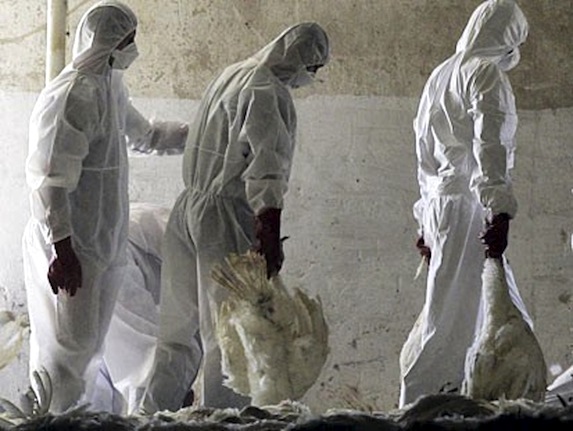Avian Influenza has taken 35 lives and infected 130 people in China so far and the fear of person-to-person transmission is rising. There is no vaccine to curb the infectious disease and experts are on the lookout to guard against the avian flu, or bird flu, coming to Australia.
The latest virus H7N9 is reportedly more powerful than its predecessors, the H1N1 that caused the 2009 Pandemic and the H5N1 avian influenza that has been around since 1997. Health experts say there is no immediate threat of H7N9 spreading but some suggest it’s only a matter of time.
Initial reports from the World Health Organization (WHO) indicated there was no evidence of person-to-person transmission but on April 19, China’s WHO representative Michael O’Leary reported that half the human cases tested in Chinese laboratories had not been in contact with poultry. This has caused concern about how the virus was contracted.
A team of international and Chinese experts completed a China-WHO Joint Mission assessment on H7N9 in Beijing on April 24 .
“We are in new territory again with H7N9, but our experience has taught us how to face it,” the National Health and Family Planning Commission (NHFPC) Director General, Dr Liang Wannian, said.
Australian Scientists now have a piece of the virus and are working on a vaccine, the Department of Health and Ageing has confirmed. The A (H7N9) serotype was transported to Australian laboratories in Melbourne to develop a vaccine in a venture carried out by the WHO Bio-Security team from Beijing.
“Vaccines are quicker to develop than they used to be, but it still takes time,” Centre for Health Economics Research and Evaluation (CHERE) deputy director, Stephen Goodall, said.
Dr Goodall said serotypes mutate rapidly and a pandemic similar to the 1918 Spanish flu is highly likely. An estimated 40 million people died during that influenza.
 Professor Chris Baggoley, Chief Medical Officer for the Australian Government, has issued information on the H7N9 virus for GPs including guidance on investigation and infection control.
Professor Chris Baggoley, Chief Medical Officer for the Australian Government, has issued information on the H7N9 virus for GPs including guidance on investigation and infection control.
The National Action Plan for Human Influenza Pandemic, last updated in September 2009, outlines public education for flu season preparedness, informing on flu etiquette and control measures.
Australian Medical Association (AMA) president Dr Steve Hambleton describes these as “cough etiquette, social distancing and surface de-contamination”. The traditional method of coughing into cupped hands is no longer seen as sufficient to prevent contamination.
“People should actually cough into a tissue, the tissue should be disposed of and then the hands washed in an alcohol-based hand rub. If they don’t have a tissue they should cough into the elbow or their shoulder, ” Dr Hambleton said.
There are seasonal flu shots available and Dr Hambleton advocates these especially for high risk groups, such as the elderly, Indigenous people or hospital employees.
Australian Chicken Meat Federation (ACMF) executive director Andreas Dubs confirmed Australia is not importing Chinese chickens.
“And eating cooked poultry presents no risk,” said Mr Dubs.
He added that preparation of uncooked poultry would still be subject to strict hygiene observance to prevent cross contamination.




